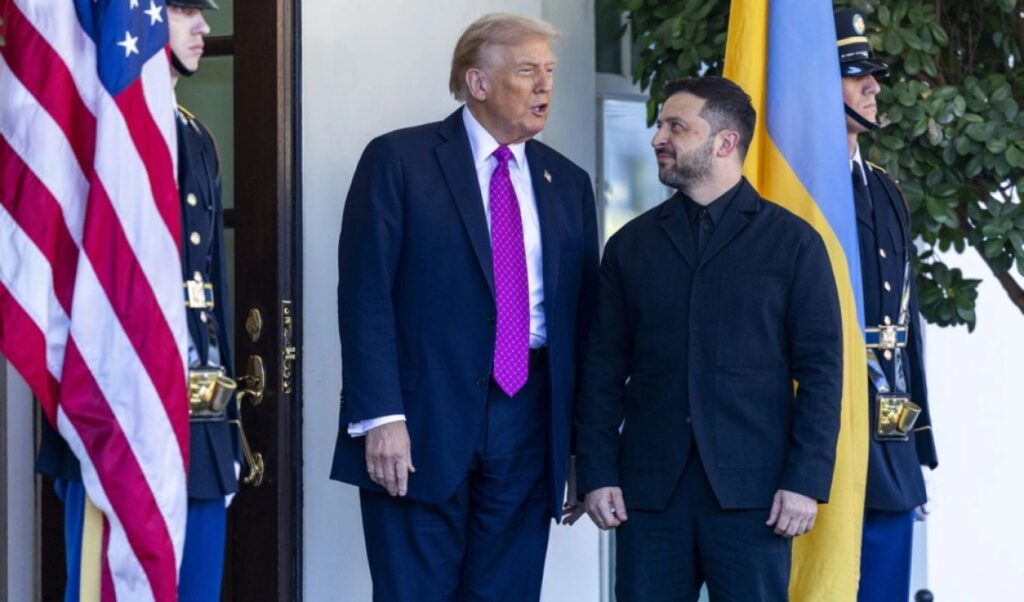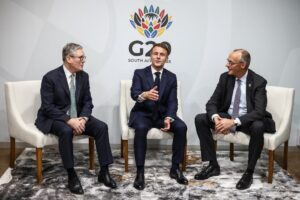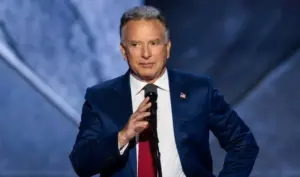Europe has entered war preparations, seeking to accelerate its rearmament with Ukraine as the spearhead, while statements from officials like German Defense Minister Boris Pistorius (FAZ, November 15, “Europe may have experienced its last peaceful summer”) and Polish Chief of General Staff Wiesław Kukuła (Polish public radio, November 17, “we are essentially in a pre-war state”) intensify the climate of concern.
Similar statements, though they escaped media attention, were made days earlier by American Defense Secretary Pete Hegseth at the National War College in Washington, who on November 7 said this is “a period (resembling) 1939 or a moment (resembling) 1981,” sending the message that “we must prepare now” if “we want to prevent war.”
These references were not coincidental, as they refer to the year World War II began and the peak of the Cold War (Reagan’s inauguration and extensive strengthening of American armament programs, emergence of the “Solidarity” movement in Poland).
The “hot” scenario clearly concerns Ukraine, which aims to further strengthen its operational capabilities as a force to contain Russia, despite being in a difficult position on the battlefield, with developments in Pokrovsk and Zaporizhzhia unfavorable for Kyiv (notably, mid-week another deadly Russian bombardment targeting western parts of the country activated air forces in Poland and Romania, raising alarm levels). Thus, Volodymyr Zelensky, during a major European tour, reached an agreement with France to purchase 100 Rafale jets (cost estimated at 7-8 billion euros), along with anti-missile defense systems and drones, with the deal spanning a decade. Spain followed, with Prime Minister Pedro Sánchez committing to provide 817 million euros to support Ukraine’s defense against the ongoing Russian invasion (615 million for military aid). This also “reaffirms” the 10-year agreement signed in 2024 providing 1 billion euros in military aid annually for 10 years.
Additionally, Madrid committed 100 million euros to the PURL initiative (purchasing American equipment within NATO framework with funding from European countries) for air defense missiles, 215 million euros through SAFE with priority on anti-aircraft defense, and 200 million euros for Ukraine’s reconstruction, prioritizing energy, transport, and water management sectors.
Ukraine war: Europe continues without contact with Moscow
Europe appears to continue on the same path of no contact with Moscow, while targeting the strengthening of its defense readiness, with the Commission presenting a plan for the “Military Schengen Area” on Wednesday (19/11), aimed at faster, safer, and more coordinated movement of troops and military equipment across Europe by 2027. The goal is to dramatically reduce the approximately 45 days required to move an army from strategic western ports to countries bordering Russia or Ukraine, as European officials estimated to the Financial Times.
However, this doesn’t mean the US ever cut channels. Thus, it shouldn’t go unnoticed that Whitcoff didn’t travel to Turkey to attend the Zelensky-Erdogan meeting, while reports from America about a “Gaza-style” 28-point plan to end the war (Axios) were being confirmed, which was subsequently disclosed to Ukrainian President Zelensky, who, according to his initial statements, appears to accept it as a basis for discussion (there are certain “hard terms” inherent in traditional Russian positions regarding territorial concessions, including Donbas, weapons systems, and reducing the country’s armed forces, in exchange for NATO-type security guarantees). Whitcoff was “replaced” by two high-ranking Pentagon generals (who traveled to Kyiv to meet Zelensky), something particularly rare, confirming American media reports that the goal is to “end” the war, a choice possibly “unorthodox” considering Trump reportedly assigns them a different role than usual.
US presence and corruption climate
The US presence in Ukraine appears to be gaining new, peculiar momentum, with active participation from personalities who had “disappeared” from the spotlight, against the backdrop of Kyiv regaining “trust” in the fight against corruption: This refers to Ukrainian defense company Fire Point (manufacturer of the FP-1 drone used in long-range strikes against Russia and the new Flamingo cruise missile), which appointed Mike Pompeo, former US Secretary of State during Trump’s first term, to its newly established advisory committee.
The company is connected to Timur Minditch, a powerful businessman and friend of Zelensky, who fled Ukraine (with a likely destination, according to international media, being Israel) after the high-profile corruption scandal worth $100 million, related to controlling contracts of the state nuclear energy company, severely testing the Zelensky government. This move was made while Fire Point plans to build a missile fuel factory in Denmark in the coming months, ahead of increased funding and equipment for Ukraine from Europe.




